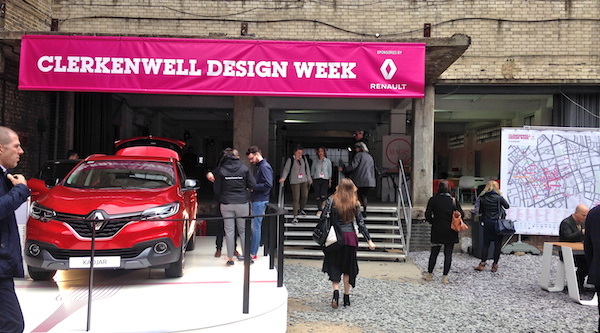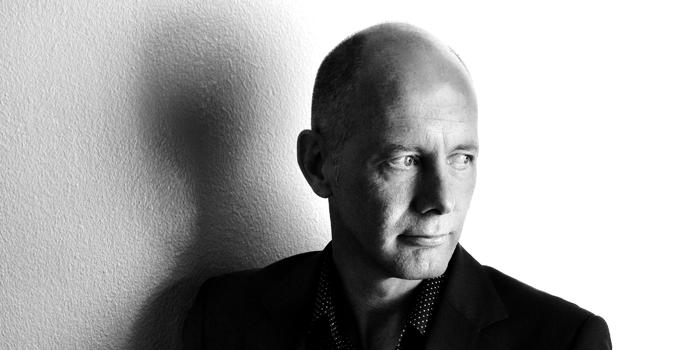Promoting well-being
Following a panel discussion on day one of London's Clerkenwell Design Week that explored the idea of how design can affect well-being, SuperyachtDesign asks whether there is a need to design for well-being in the realm of superyachts.…
A visual of UN Studio's Canaletto tower in East London
Following a panel discussion on day one of London's Clerkenwell Design Week that explored the idea of how design can affect well-being, SuperyachtDesign asks whether there is a need to design for well-being in the realm of superyachts.
Any designer will tell you that good design can have a positive impact on your mood. In the first talk at this year’s Clerkenwell Design Week, a panel went further, explaining how intelligent design can improve individual well-being by bringing people together, inspiring greater creativity and connecting people better to their environment.
“We are getting richer all the time but not happier,” said Dr Brendan Burchell, a professor of sociology at Cambridge University, pointing to a graph plotting wealth against life satisfaction. If greater prosperity doesn’t mean greater happiness, asked Burchell, what does affect well-being and how can we encourage happiness through design? Burchell was commissioned to look at exactly this by Canaletto, a new residential tower in London designed by Dutch architectural practice UNStudio.
The Farmiloe Building, Clerkenwell Design Week 2015
Burchell’s research revealed that while some general factors such as gender, marital status and wealth did weakly impact well-being, the strongest influences were from people’s living environments. “If you are satisfied with your housing and environment, you are much happier,” Burchell explained. “So in terms of individual well-being, if you want to be happy, you should be paying more attention to where you live.”This may seem obvious on the surface, but it comes down to more than just making sure you have a nice house and keep things tidy. The way spaces are designed, the way you are connected with the environment and the way you are connected with the wider community can all improve well-being.
Ben van Berkel, one of the founders of UNStudio, offered examples of past projects the studio has worked on where well-being and social sustainability—planning and designing buildings and spaces with the wider building a thriving local community in mind—was at the heart of the concept. He gave the example of the stairwell in one project encouraging people to meet and interact, or a house the designed in northern Holland where the clients wanted not only to always hear the sounds of life in the house (their children, someone cooking in the kitchen) but also feel like they were living as close as possible and part of the landscape.
Ben van Berkel of UNStudio
There is a parallel here with the growing trend over the last couple years for yachts that are much more connected to the ocean; bigger windows, larger outside spaces, inside-outside areas, beach clubs that extend into the sea. The recent concept collaboration between Andrew Winch Designs and Abeking & Rasmussen Intensity is a good example of a yacht that connects with the environment through its design. Amidships it there is a double story glass façade, that takes the glass really low, something that allows for a completely different view of the sea below. Instead of the view starting at the horizon, you can see the foreground, which is much more inclusive and all encompassing.
It would be equally interesting to see more GAs that rethink the tested ideas of space. There are those yachts that combine open, communal spaces with areas that guests can escape for a quiet moment alone, but in general, layouts tend to be very staid. Would a greater flow between spaces and cabins, or more open plan areas improve interaction between guests and consequently heighten their sense of well-being? Obviously regulations often mean restrictions in the way crew spaces in particularly can be designed, but is there a way to rethink the design of typical crew accomocation to improve their sense of well-being on board?
In the world of superyachts, while the focus of luxury is often on the fittings and finishes, most will agree that the real luxury is the quality time you get to interact with family and friends, and the ability to change the view out of your window when you please. Rethinking spaces, how they can enable interaction and seclusion better, and how a yacht can be even more connected to the environment around it will only add to the luxury and sense of well-being.
How other sectors of the design world can learn from each other is always a central part of SuperyachtDESIGN Week and this year will be no different. With speakers from across the car design, jet design, residential architecture and superyacht design realms, SuperyachtDESIGN Week (23 to 25 June 2015 at Design Centre, Chelsea Harbour in London) is the place to explore how the industry can evolve, grow and learn. To read the programme, find out more and register, click here.
Click here to become part of The Superyacht Group community, and join us in our mission to make this industry accessible to all, and prosperous for the long-term. We are offering access to the superyacht industry’s most comprehensive and longstanding archive of business-critical information, as well as a comprehensive, real-time superyacht fleet database, for just £10 per month, because we are One Industry with One Mission. Sign up here.





